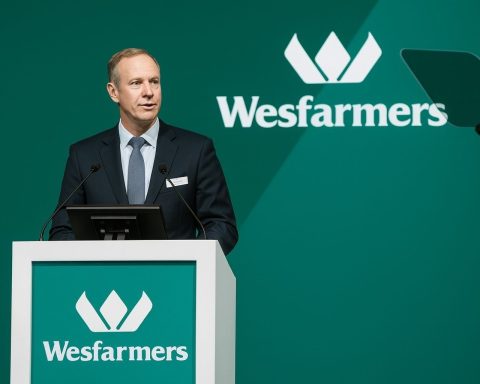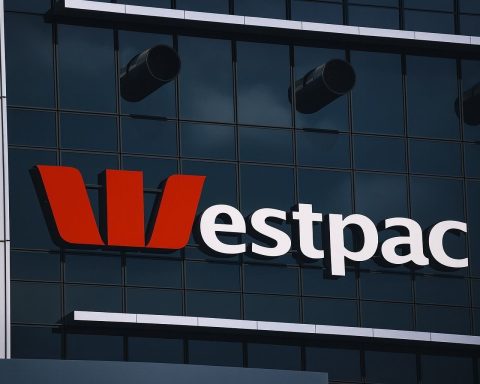Northern Star Resources Ltd (ASX:NST) goes into Monday’s session as one of the standout winners of 2025’s gold boom – but also with a few new moving parts investors should understand before the bell.
As of Friday’s close (21 November), NST finished at A$25.50, down 3.99% on the day on elevated volume, yet still near its recent all‑time high of A$27.02 and roughly 64% higher year‑to‑date. [1]
The company has just wrapped up its AGM, reaffirmed FY26 guidance after a solid September quarter, and is digesting a A$5 billion takeover of De Grey Mining and its Hemi project that pushes Northern Star into the ranks of the world’s top global gold producers. [2]
Below is a concise rundown of what’s shaping the NST investment story before the Australian market opens on 24 November 2025.
1. NST share price snapshot heading into 24 November 2025
- Last close: A$25.50 (Friday 21 November)
- Day move: ‑3.99%, with a trading range of A$25.03–A$25.88 on heavy turnover of ~6.7 million shares. [3]
- 52‑week range: A$15.06–A$27.02, with the high set earlier this month. [4]
- Performance: Share gains of about 63.7% year‑to‑date, with strong one‑ and three‑month momentum linked to the September quarter update and gold’s rally. [5]
- Size & ranking: Approximate market cap of A$36.5 billion, making NST a top‑20 ASX company and the fourth‑largest name in the Basic Materials sector. [6]
On fundamentals, MarketIndex data show earnings per share of about A$1.12, dividends per share of A$0.55 and book value per share of A$10.43. At Friday’s price, that implies a trailing P/E of roughly 23x and a trailing dividend yield around 2.1–2.4%, with a payout ratio close to 49%. [7]
For context, NST has outpaced both the ASX 200 and the broader materials sector over the last year, with its one‑year return running more than 40 percentage points ahead of the benchmark. [8]
2. AGM recap: record cash generation and a bigger dividend
Northern Star held its 2025 Annual General Meeting on 18 November, releasing the Chairman’s address and Managing Director’s AGM presentation – the last major company communication before Monday’s trade. [9]
Key FY25 highlights reiterated at the AGM were:
- Gold sold: 1.634 million ounces
- All‑in sustaining cost (AISC): A$2,163 per ounce
- Cash earnings: A$2.9 billion (up 59%)
- Net cash: A$1.0 billion at 30 June 2025
- Dividends: 55 cents per share for FY25, up 37% year‑on‑year
- Share buy‑back: A$300 million completed over FY23–FY25. [10]
The Chairman acknowledged that FY25 production was “slightly below budget” but within revised guidance after geotechnical challenges delayed access to the Golden Pike North area at Kalgoorlie’s Super Pit (KCGM). Those issues have now been addressed, with Golden Pike mining underway and expected to support stronger KCGM output going forward. [11]
Management also highlighted:
- The completed De Grey/Hemi acquisition, described as a “major achievement” setting Northern Star up for long‑term success. [12]
- Progress on the KCGM Mill Expansion Project, which remains on track for commissioning in mid‑2026 and aims to lift throughput from 13 million tonnes to 27 million tonnes per year by FY29 – targeting around 900,000oz of annual gold production from KCGM at steady state. [13]
- Ongoing investment in decarbonisation, including new wind and solar farms at Jundee and Carosue Dam, which are expected to reduce emissions and lower fuel costs over time. [14]
Shareholders also approved 403,466 performance rights for CEO Stuart Tonkin, aligning incentives to medium‑term value creation at projects such as KCGM and Hemi. [15]
3. September quarter (Q1 FY26): higher costs, guidance intact
Northern Star’s September 2025 quarter (Q1 FY26) remains the freshest operating data before Monday’s open.
From the company’s quarterly report and subsequent commentary:
- Gold sold: 381,055 ounces
- Group AISC: A$2,522/oz
- By production centre:
- Kalgoorlie: 202,812oz at AISC A$2,474/oz
- Yandal: 113,422oz at AISC A$2,778/oz
- Pogo (Alaska): 64,821oz at AISC US$1,453/oz. [16]
Financially, Q1 delivered:
- Net mine cash flow: A$183 million
- Underlying free cash flow: A$14 million, after heavy growth capex
- Net cash: A$616 million
- Cash and bullion: A$1.51 billion as at 30 September 2025. [17]
Crucially for investors, Northern Star reaffirmed FY26 guidance of:
- 1.70–1.85 million ounces of gold sold
- AISC: A$2,300–A$2,700/oz
- Growth capex: A$2.125–2.27 billion, largely for the KCGM mill expansion, operational readiness and the Hemi development
- Exploration spend: about A$225 million. [18]
Management flagged that disruptions at Jundee and South Kalgoorlie could trim December‑quarter sales by up to 20,000oz, but that lost tonnage should be processed later in FY26, preserving full‑year guidance. [19]
One watchpoint is cost inflation: Q1 AISC of A$2,522/oz sits near the mid‑point of FY26 guidance and well above FY25’s A$2,163/oz, reflecting sector‑wide trends in labour, energy and sustaining capex. [20]
Earlier in the year, RBC Capital Markets described Northern Star’s initial FY26 guidance as “soft”, contributing to a share price wobble when FY25 sales landed towards the lower end of a revised range. [21] The reaffirmation of that guidance, coupled with strong gold prices, has since helped restore market confidence, as reflected in the stock’s sharp rally through October and early November.
4. Gold price supercycle: the macro tide behind NST
Northern Star’s earnings are tightly geared to the gold price, and 2025 has been an extraordinary year for bullion:
- Gold futures are up almost 60% year‑to‑date, trading around US$4,100–4,200/oz in mid‑November after hitting record highs above US$4,300/oz in October. [22]
- Goldman Sachs recently reiterated a US$4,900/oz year‑end 2026 target, noting that gold peaked around US$4,336/oz in late October before consolidating near US$4,062/oz. [23]
- UBS, Morgan Stanley and HSBC have all lifted their 2026 forecasts, with upside cases clustering around US$4,500–5,000/oz, citing strong central‑bank buying, ETF inflows and geopolitical risk. [24]
Industry‑wide, gold miners have ridden the wave: a global precious metals and mining index is up roughly 86% in 2025, far ahead of broad equity markets. [25]
However, Australian producers face a paradox of record prices but stubborn cost pressure and declining national output. Recent analysis suggests Australian gold production is set to fall for a fifth straight year in 2025 while all‑in sustaining costs across the sector have risen about 9% year‑on‑year, driven by higher energy, labour and environmental compliance spending. [26]
For NST, the combination of elevated AISC and a massive growth capex program means operating leverage works both ways: higher gold prices amplify free cash flow, but any meaningful pullback in bullion could pressure margins and reduce headroom for dividends and buy‑backs.
5. De Grey / Hemi: the growth engine investors are watching
The headline strategic move of the past year is Northern Star’s A$5 billion all‑share acquisition of De Grey Mining, completed in May 2025. [27]
Through this deal, Northern Star gained full control of the Hemi Development Project in Western Australia’s Pilbara region:
- Hemi is described as a low‑cost, long‑life, large‑scale gold project in a Tier‑1 jurisdiction. [28]
- De Grey’s published studies point to average production of roughly 530,000–553,000oz per year in the first decade of operation, placing Hemi among the largest new gold mines globally. [29]
- Combined with Kalgoorlie, Yandal and Pogo, Northern Star is targeting total output of around 2.5 million ounces annually by the late 2020s, positioning it firmly in the top tier of global gold producers. [30]
For now, Hemi remains a development project subject to final approvals and substantial capital spend, and it is notincluded in Northern Star’s FY26 production guidance. [31]
Investors heading into Monday’s trade should understand that NST’s current valuation already reflects a degree of optimism about:
- Successful execution at Hemi
- KCGM mill expansion hitting its 900koz per‑year target by FY29
- Sustained high gold prices to monetise this enlarged production base. [32]
Delays, cost overruns or permitting issues at these projects would represent key medium‑term risks.
6. Balance sheet, dividends and shareholder returns
Northern Star currently combines strong cash generation with a shareholder‑friendly returns policy:
- FY25 generated record underlying free cash flow of around A$536 million, supporting a net cash balance of A$1.0 billion at year‑end. [33]
- Cumulative net mine cash flow from FY22–FY25 reached A$3.2 billion, with A$1.7 billion returned to shareholders as dividends over that period. [34]
- The company completed a A$300 million on‑market buy‑back by FY25, retiring shares while simultaneously lifting the annual dividend. [35]
- FY25 dividends of 55c per share (25c interim, 30c final) mark a three‑year dividend growth rate of roughly 29%, according to dividend tracking services. [36]
On current pricing, the forward dividend yield sits around 2.3–2.4%, modest in absolute terms but underpinned by a relatively conservative sub‑50% payout ratio and a balance sheet with more cash than debt. [37]
The trade‑off investors must weigh is that a large portion of NST’s free cash flow in FY26–FY28 is earmarked for growth projects at KCGM and Hemi, meaning capital returns may be more volatile and sensitive to metal prices than in past years.
7. Ownership shifts and the looming Gold Fields selldown
Two notable ownership themes matter for NST watchers right now:
a) Substantial holder churn
Recent ASX filings show several large institutions adjusting their stakes in Northern Star during 2025. JPMorgan and affiliates ceased to be substantial holders in October, while BlackRock trimmed its stake from just over 10% to around 9.2% in November. [38]
On their own, such moves aren’t unusual for a large, liquid ASX 50 stock, but they do underscore the role that block trades and index flows play in NST’s short‑term share price.
b) Gold Fields’ A$1.1 billion stake overhang
A more specific issue is the 4.5% stake in Northern Star tied to the Gold Road Resources takeover:
- South Africa’s Gold Fields is acquiring Gold Road Resources in a A$3.7 billion deal that includes nearly 49.3 million NST shares (about 4.5% of Northern Star) inherited via Gold Road’s previous holding in De Grey. [39]
- Rising NST’s share price means that stake is now valued at around A$1.1 billion, and reporting in The Australiansuggests Gold Fields is likely to sell down the position after the Gold Road transaction completes, with JPMorgan advising. [40]
A large block sale – whether via a placement to institutions or a series of on‑market selldowns – could create short‑term supply pressure on NST shares, even if it ultimately broadens the share register. Investors should watch for ASX “change in substantial holding” notices and any broker‑led block trade announcements in coming weeks.
8. How the market is valuing NST now
Independent and sell‑side analysis broadly recognises Northern Star as financially strong, but increasingly “priced for delivery” on its growth plans:
- Simply Wall St’s consensus‑based fair value model recently nudged its estimate up from A$26.51 to A$27.26 per share, around 7% above the current price, after factoring in higher forecast revenue and margins. [41]
- That model projects revenue of roughly A$9.1 billion and A$2.0 billion in earnings by 2028, implying compound annual revenue growth of ~12% from about A$5.8–6.0 billion today. [42]
- Analysts have lifted their price targets alongside gold, with at least one consensus target moving from A$18 to A$22 in updated research – but often retaining “Neutral” recommendations given the strong run NST has already had. [43]
Broadly, the market appears to be pricing NST as a high‑quality, large‑scale gold growth story with a solid balance sheet, but one where much of the easy upside from re‑rating has already been captured in 2025’s 60‑plus percent rally.
9. Key risks investors should keep in mind
Heading into Monday’s session, several risk factors stand out:
- Gold price volatility
- The gold price has paused after a “phenomenal run”, now consolidating just above US$4,000/oz. Strategists at UBS and others see this as a base for another move higher, but a sharper correction would hit NST’s margins and could compress its valuation multiple. [44]
- Cost inflation and AISC creep
- NST’s AISC has risen from A$2,163/oz in FY25 to A$2,522/oz in the September quarter, and management’s FY26 guidance of A$2,300–2,700/oz bakes in ongoing pressure. Across the Australian gold sector, rising labour, energy and regulatory costs are squeezing margins despite record prices. [45]
- Execution risk on major projects
- The KCGM mill expansion, East Wall remediation, and Hemi development all involve multi‑year, multi‑billion‑dollar commitments. Delays, cost overruns or technical issues could reduce the anticipated uplift to production and cash flow. [46]
- Hedging strategy
- Northern Star has about 1.275 million ounces hedged at an average A$3,309/oz, limiting downside but also capping upside compared with unhedged peers while spot trades well above A$4,000/oz-equivalent. Recent sector commentary suggests some Australian miners, including NST, are revisiting their hedging policies to capture more of the rally. [47]
- Regulatory and ESG headwinds
- Stricter environmental standards, permitting timelines and land‑access rules in Australia continue to add cost and complexity, particularly for large open‑pit and tailings‑heavy operations such as KCGM. [48]
- Share overhang from Gold Fields and institutional churn
- Any sizeable block sale of NST shares related to the Gold Fields / Gold Road transaction could temporarily weigh on the share price, even if fundamentals remain unchanged. [49]
10. What could move NST after the 24 November open?
While no scheduled company announcements are expected on Monday itself, several factors could drive NST’s performance in the coming days and weeks:
- Weekend moves in the gold price and fresh macro data that influence expectations for US interest rates and the US dollar. [50]
- Any ASX filings on changes in substantial holdings, especially relating to Gold Fields’ stake, large index funds, or further BlackRock/JPMorgan activity. [51]
- Broker research updates digesting the AGM commentary and the Q1 numbers – potentially tweaking price targets or recommendations. [52]
- The broader risk‑on/risk‑off tone in equities, given NST’s inclusion in major indices, which makes it sensitive to ETF flows. [53]
- Looking slightly further ahead, Northern Star’s December quarter results on 22 January 2026 and 1H26 financials on 12 February 2026 are the next scheduled, high‑impact catalysts. [54]
Bottom line
Heading into the 24 November 2025 open, Northern Star Resources is:
- A leveraged play on a still‑bullish gold price outlook,
- With strong FY25 results, a net cash balance and a rising dividend,
- But also heavy capex commitments, rising costs, and a potential A$1.1 billion share overhang from a likely Gold Fields selldown.
For investors following NST, the key near‑term questions are whether gold can stay above US$4,000/oz, how smoothly KCGM and Hemi progress, and how the market absorbs any large secondary share sales.
This article is general information only and does not constitute financial product advice. It does not take into account your personal objectives, financial situation or needs. Consider speaking with a licensed financial adviser before making any investment decisions.
References
1. www.intelligentinvestor.com.au, 2. www.nsrltd.com, 3. www.intelligentinvestor.com.au, 4. stockinvest.us, 5. kalkine.com.au, 6. www.intelligentinvestor.com.au, 7. www.marketindex.com.au, 8. www.marketindex.com.au, 9. www.nsrltd.com, 10. www.nsrltd.com, 11. www.nsrltd.com, 12. www.nsrltd.com, 13. www.nsrltd.com, 14. www.nsrltd.com, 15. www.intelligentinvestor.com.au, 16. www.nsrltd.com, 17. kalkine.com.au, 18. kalkine.com.au, 19. kalkine.com.au, 20. www.nsrltd.com, 21. www.capitalbrief.com, 22. www.cbsnews.com, 23. www.barrons.com, 24. www.mining.com, 25. capital.com, 26. www.mining-technology.com, 27. www.nsenergybusiness.com, 28. www.nsrltd.com, 29. www.reuters.com, 30. www.ft.com, 31. www.nsrltd.com, 32. www.nsrltd.com, 33. www.nsrltd.com, 34. www.nsrltd.com, 35. www.nsrltd.com, 36. www.marketindex.com.au, 37. www.marketindex.com.au, 38. www.marketindex.com.au, 39. www.reuters.com, 40. www.theaustralian.com.au, 41. simplywall.st, 42. simplywall.st, 43. simplywall.st, 44. goldinvest.de, 45. www.nsrltd.com, 46. www.nsrltd.com, 47. kalkine.com.au, 48. discoveryalert.com.au, 49. www.theaustralian.com.au, 50. fortune.com, 51. www.marketindex.com.au, 52. simplywall.st, 53. capital.com, 54. www.nsrltd.com









